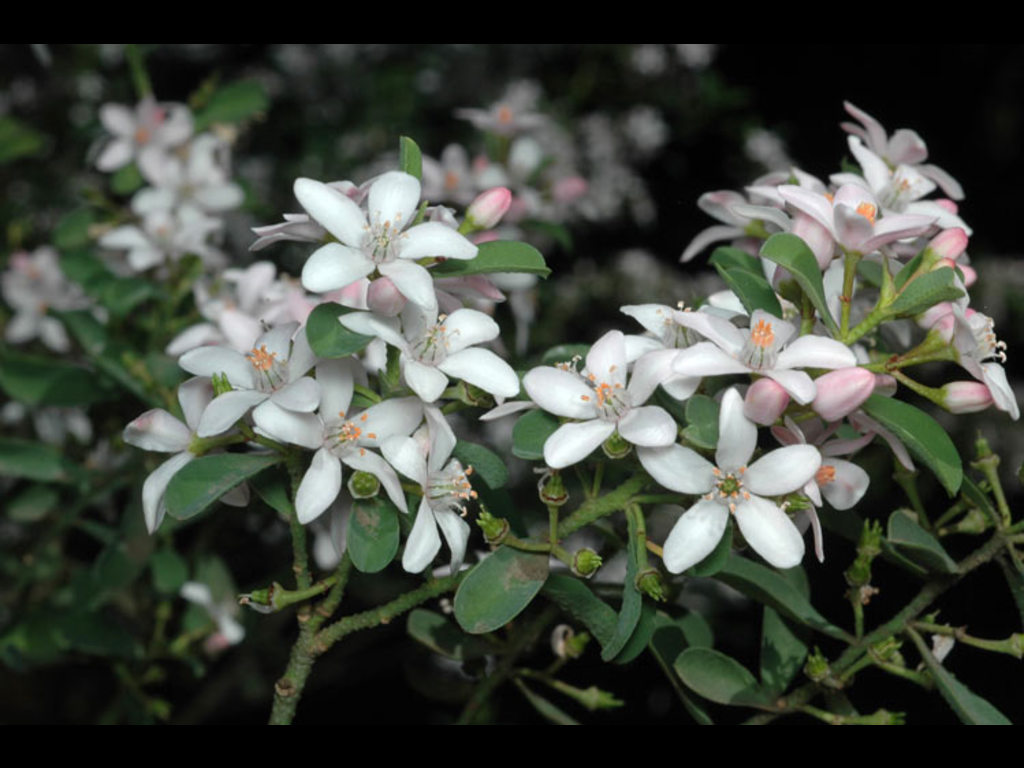Philotheca 'Poorinda'
- File Number
- 289
- ACRA Field Book Number
- 56
- Registration Date
- 04/04/1986
- Application Received
- 01/09/1982
- Family
- Rutaceae
- Cultivar Name
- Philotheca 'Poorinda'
- Origin
- Philotheca 'Poorinda' is thought, on the basis of it's intermediacy, to be the result of a cross between a large leaved form of Philotheca myoporoides (formerly Eriostemon myoporoides) and a pink form of Philotheca verrucosa (formerly Eriostemon verrucosus). The cultivar was first received by the Authority on 1 September 1982. Registration has been applied for by Mr L Hodge, then of Mt Lookout Road, Bairnsdale, now of Harris Street, Corryong, 3707.
- Characteristics
- Eriostemon 'Poorinda' grows to 1.5m tall and about .8m across. The branches are glabrous, verrucose, and of medium density. The leaves are obovate with a broadly obtuse apex and about 4cm long and 1.2cm wide. The lower surface is dotted with numerous small glandular verrucosities. The inflorescence is an axillary pedunculae cluster of up to four flowers, each cluster measuring about 1.8cm across. The buds are bright pink opening to white with a pale pink tinge where the colour shows through. Flowering occurs from spring to summer. It has been in cultivation since 1965. Diagnosis: This cultivar attains a height intermediate between P. verrucose (0.3-.6m) and P. myoporoides (up to 2m). The leaves are in the shorter range of P. myoporoides which can be from 1.5-11cm long and they are much larger than P. verrucosa which has leaves up to 1.5cm. Philotheca 'Poorinda' is much less prominent than P. myoporoides. The flowers are in larger clusters than P. verrucosa where they are usually solitary but they are fewer than for P. myoporoides which may have 4-6 flowers per cluster. The petals are pink in bud and white when open like those of P. verrucose but a little longer, being closer in size to P. myoporoides.
- Cultivation
- Hardy, reliable and adaptable cultivar which flowers prolifically, growing well in most soils. Best in a sunny site but will tolerate some shade. It responds well to heavy pruning and is drought tolerant and frost hardy.
- Publication
- Elliot, W.R. & Jones, D.L. (1984), Encyclopaedia of Australian plants suitable for cultivation 3: 478
- Colour Coding
- RHS Colour Code 1966buds: red group 55A/Bcorolla: underside red group 55Bupperside: whiteanthers: orange group 25Afoliage: green group 137B
- Propagation
- Cuttings from semi-firm new growth
- Applicant Name
- Mr L Hodge.
- Uses
- As part of a mass planting or mixed in a shrubbery, or as a spectacular feature plant or large display pots.
- Availability
- Specialist native plant nurseries
- ANBG Accession Numbers
- ACC289, ACRA118, CBG8408051
- NSL ID
- -

